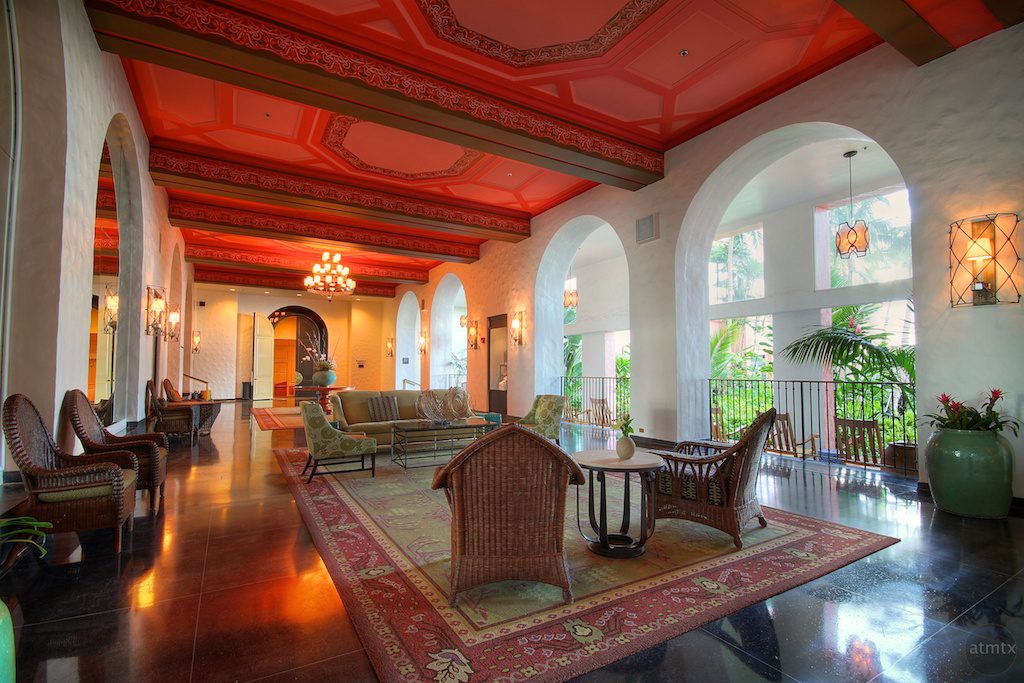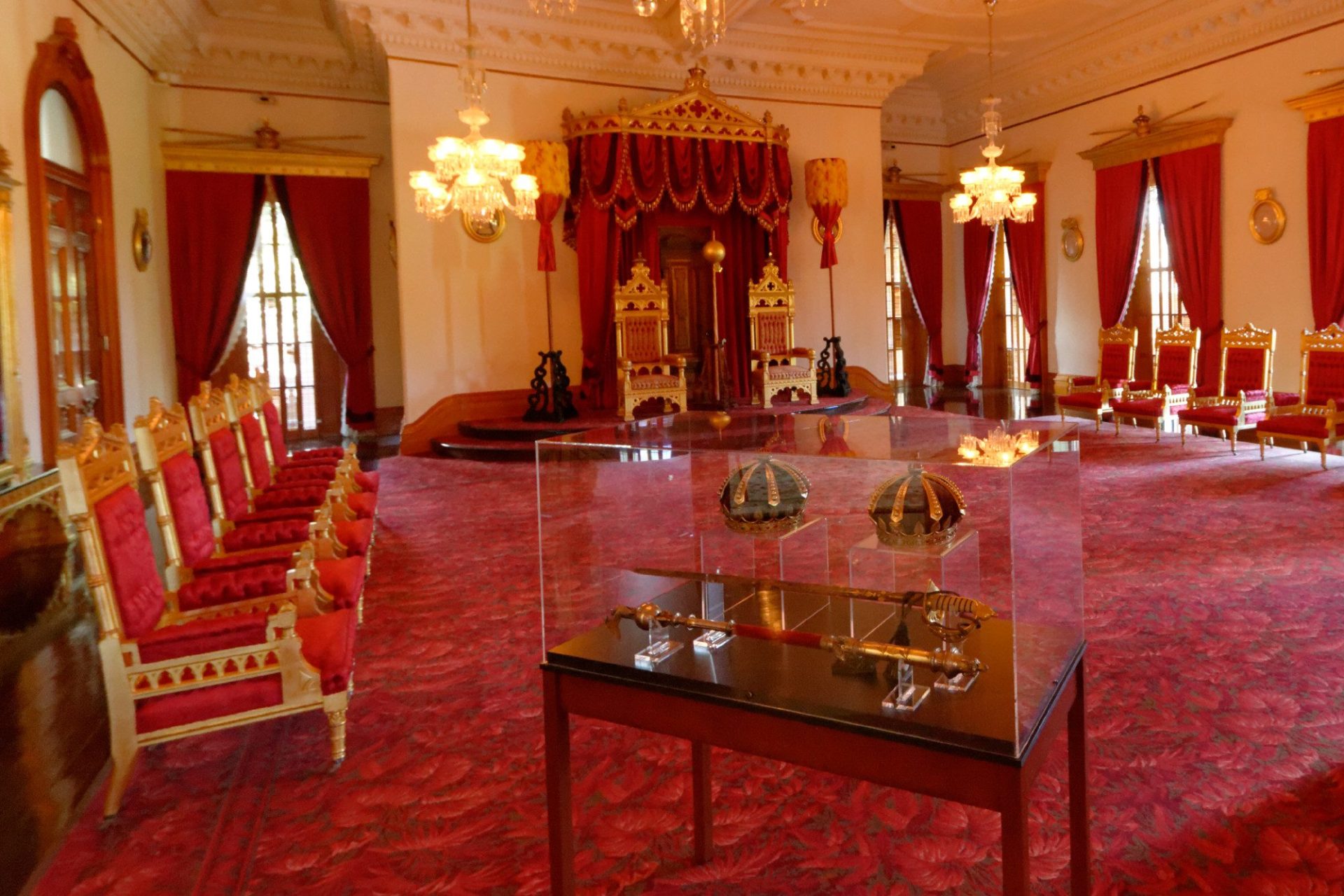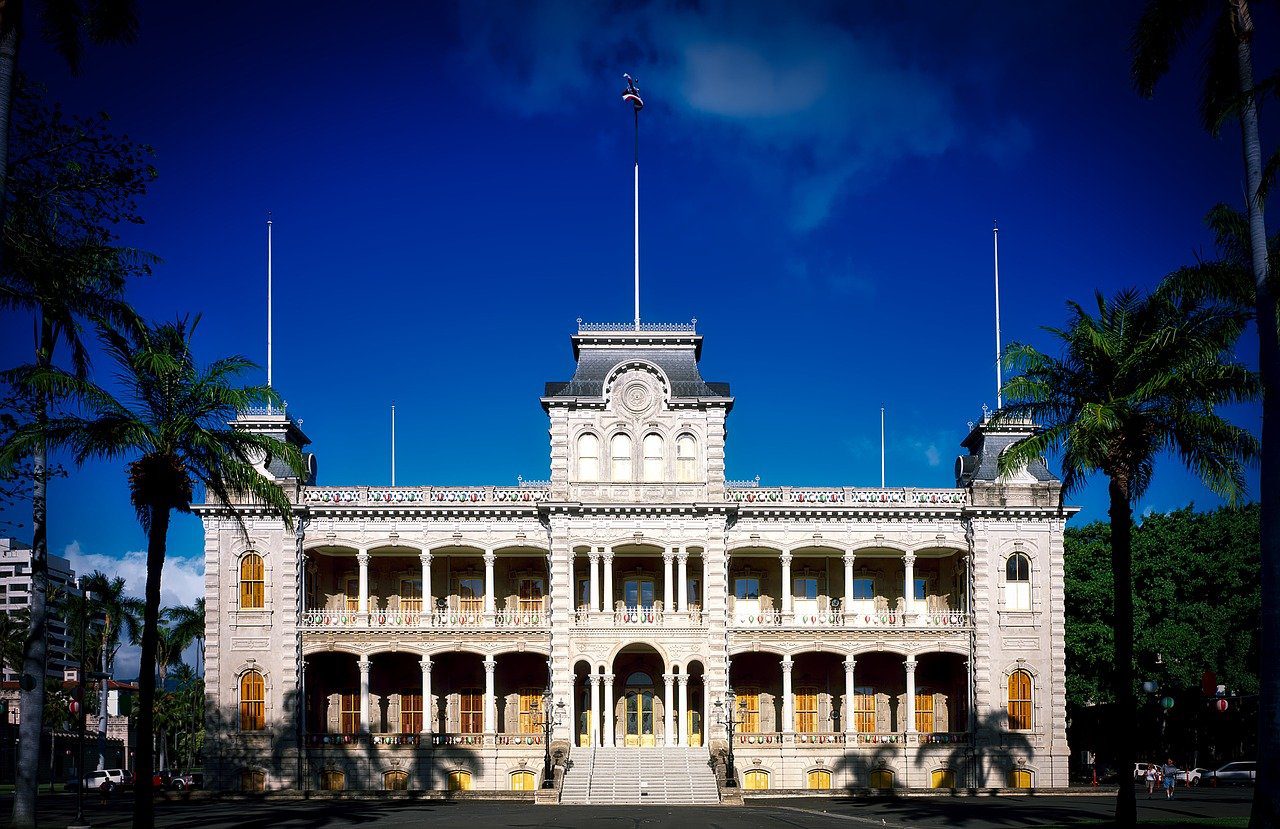The ʻIolani Palace was the royal residence of the rulers of the Kingdom of Hawaii beginning with Kamehameha III under the Kamehameha Dynasty (1845) and ending with Queen Liliʻuokalani (1893) under the Kalākaua Dynasty, founded by her brother, King David Kalākaua. It is located in the capitol district of downtown Honolulu in the U.S. state of Hawaiʻi. It is now a National Historic Landmark listed on the National Register of Historic Places. After the monarchy was overthrown in 1893, the building was used as the capitol building for the Provisional Government, Republic, Territory, and State of Hawaiʻi until 1969. The palace was restored and opened to the public as a museum in 1978. The ʻIolani Palace is the only royal palace on US soil.

Three architects, Thomas J. Baker, Charles J. Wall, and Isaac Moore, contributed to the design; of these, Baker designed the structure, while Wall and Moore offered other details.The cornerstone was laid December 31, 1879 during the administration of Minister of the Interior Samuel Gardner Wilder.
It was built of brick with concrete facing. The building was completed in November 1882 and cost over $340,000 — a vast fortune at the time. It measures about 140 feet (43 m) by 100 feet (30 m), and rises two stories over a raised basement to 54 feet (16 m) high. It has four corner towers and two in the center rising to 76 feet (23 m). On February 12, 1883 a formal European-style coronation ceremony was held, even though Kalākaua had reigned for 9 years. The coronation pavilion officially known as Keliiponi Hale was later moved to the southwest corner of the grounds and converted to a bandstand for the Royal Hawaiian Band.

ʻIolani Palace features architecture seen nowhere else in the world. This unique style is known as American Florentine. On the first floor a grand hall faces a staircase of koa wood. Ornamental plaster decorates the interior. The throne room (southeast corner), the blue meeting room, and the dining room adjoin the hall. The blue room included a large 1848 portrait of King Louis Philippe of France and a koa wood piano where Liliʻuokalani played her compositions for guests. Upstairs are the private library and bedrooms of the Hawaiian monarchs.
The palace was a symbol of promise for the Hawaiian Kingdom built by King David Kalakaua, “The Merrie Monarch.” Influenced by European architectural styles, this royal residence included Hawaii’s first electric light system, flush toilets and intra-house telephones. The rich interior features a beautiful koa staircase, dramatic portraits of Hawaiian royalty, ornate furniture and royal gifts and ornaments from around the world.
According to en.Wikipedia; gohawaii.com. Source of photos: internet








